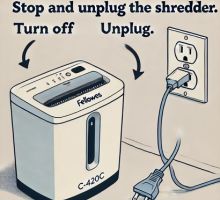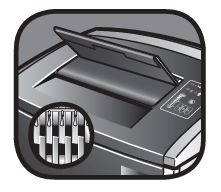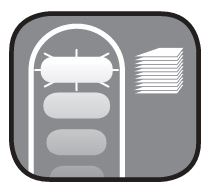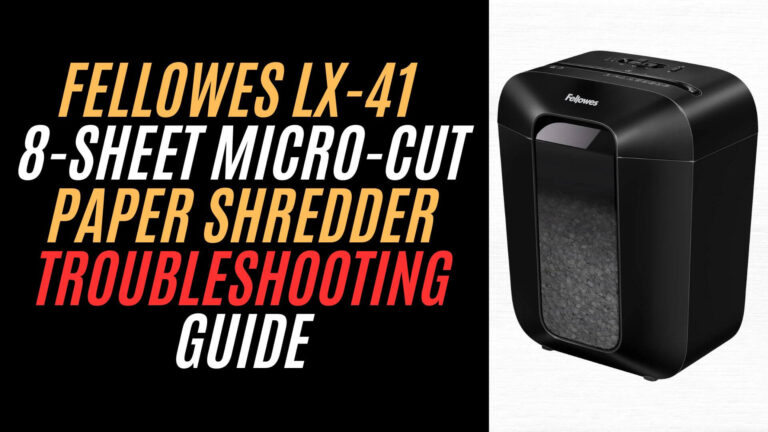The Fellowes C-420C shredder is a reliable machine designed for high-volume shredding, but even the most durable shredders can experience overheating, especially with continuous use. When this shredder overheats, it temporarily shuts down to cool off and protect the motor from potential damage.
In this guide, we’ll explore common reasons for overheating, essential troubleshooting steps, and preventive measures to keep your shredder running smoothly.
Why Addressing Overheating Issues is Important
Overheating is a common issue that, if left unchecked, can lead to more serious mechanical failures. Understanding why your shredder overheats and taking steps to prevent it can ensure safe and reliable operation.
Here’s why addressing overheating is essential:
- Protects the Motor: Regular overheating can strain the motor and potentially lead to costly repairs.
- Reduces Downtime: By managing overheating, you can reduce unexpected pauses, keeping workflow steady.
- Ensures Safety: Overheating can cause parts to wear down more quickly, increasing the risk of internal damage.

Three Common Causes of Overheating in the Fellowes C-420C Shredder
- Continuous Shredding Beyond Duty Cycle: The C-420C is a high-capacity shredder, but even robust models have recommended usage cycles. Running the shredder continuously without allowing it to cool down can lead to overheating.
- Lack of Regular Maintenance: Dust and debris build-up can hinder ventilation, leading to trapped heat around the motor. Additionally, dull blades require more power, contributing to excess heat.
- Insufficient Lubrication: Without regular oiling, the shredder’s blades experience friction, which can create heat and strain the motor.
Step-by-Step Troubleshooting for Overheating Issues in the Fellowes C-420C Shredder
Overheating in the Fellowes C-420C shredder can disrupt operation and may eventually cause wear on internal components.
Follow these step-by-step troubleshooting tips to safely cool down your shredder and restore its functionality.
Step 1: Turn Off and Unplug the Shredder

Turning off and unplugging the shredder prevents accidental activation and protects the motor from further strain while it cools.
Locate the power switch and ensure it is set to the “Off” position, then unplug the shredder from the outlet. This action immediately stops power to the motor, allowing it to cool faster and safely.
Step 2: Allow the Shredder to Cool Down
After overheating, the shredder requires a rest period to let the motor cool completely before resuming normal operations. Running the shredder without cooling time can lead to more frequent overheating.
Leave the shredder off and unplugged for at least 15-20 minutes. If the shredder is used frequently, allowing it to cool down periodically during operation can prevent overheating altogether.
Step 3: Check for Dust and Debris Build-Up in the Vents
Ventilation is essential for keeping the motor cool during operation. Dust and paper particles can block the vents, trapping heat and leading to overheating.
With the shredder unplugged, inspect the vent areas on the shredder’s exterior for visible dust. Use compressed air or a small brush to remove any accumulated debris from the vents, ensuring proper airflow. Regularly clearing vents of dust helps maintain adequate cooling during use.
Step 4: Inspect the Shredder’s Blades and Interior

Debris lodged within the blades or the internal housing can reduce airflow and increase motor workload, contributing to overheating.
Carefully open the shredder to access the blades and remove any paper remnants, dust, or debris that may be lodged inside. Use tweezers for small pieces and compressed air for hard-to-reach areas. This cleaning step improves the shredder’s efficiency and reduces motor strain.
Step 5: Ensure Proper Lubrication of Blades

Lubrication reduces friction, which can generate heat and cause the motor to overheat. Regular oiling keeps the blades moving smoothly and reduces strain.
Apply Fellowes-approved non-aerosol, vegetable-based shredder oil across the blades, following the manufacturer’s guidelines. Run the shredder in reverse mode for 10-15 seconds to distribute the oil evenly.
Regularly lubricating the blades—especially during heavy usage—prevents excessive friction that could lead to overheating.
Step 6: Reduce the Shredding Load

Overloading the shredder beyond its recommended capacity strains the motor and increases the chance of overheating.
Stick to the Fellowes C-420C’s recommended sheet capacity of 24-26 sheets per pass. Shredding within this limit prevents overloading and keeps the motor operating within safe limits. If the shredder has been used for a high-volume shredding task, consider reducing the load or shredding smaller batches at intervals to allow the motor to cool between sessions.
Step 7: Monitor the Duty Cycle
The duty cycle refers to the shredder’s maximum run time before a cooling period is needed. Overuse within a single session can cause overheating.
Pay attention to the shredder’s duty cycle. For heavy-duty shredders like the Fellowes C-420C, follow the manufacturer’s guidelines for how long the machine can run continuously before requiring a break. After each cycle, give the shredder adequate rest to cool down, especially during periods of intensive use.
Step 8: Test the Shredder with a Single Sheet After Cooling
Testing with a single sheet ensures the shredder is functioning properly and that the motor has cooled sufficiently to handle a normal load again.
Plug the shredder back in and turn it on. Insert a single sheet to see if the shredder operates smoothly without signs of strain. If the shredder performs well, gradually return to regular usage; if it shows signs of overheating again, allow additional cooling time and ensure all troubleshooting steps were properly followed.
By carefully following these troubleshooting steps, you can address overheating issues with your Fellowes C-420C shredder effectively.
Routine maintenance, including clearing dust, lubricating the blades, and adhering to recommended usage limits, will help prevent overheating and keep your shredder performing at its best.
Tips to Prevent Overheating in the Fellowes C-420C Shredder
- Follow Duty Cycle Recommendations: Allow the shredder to rest after extended shredding sessions to avoid pushing the motor beyond its limits. Observe cooling intervals if the shredder is used continuously for more than 10-15 minutes.
- Regularly Clean and Maintain the Shredder: Clean the shredder’s blades, sensors, and ventilation areas regularly to keep it running smoothly. Removing dust and debris prevents blockages that can trap heat around the motor.
- Refill Oil Reservoir as Needed: Use the auto-oiling feature or manually apply oil to reduce friction on the blades. Consistent lubrication will help maintain efficient operation and prevent excess heat.
- Avoid Overloading with Thick or Stapled Paper: Avoid feeding materials thicker than the shredder’s specified capacity. Staples, thick paper, or cardboard require more power to shred, putting extra strain on the motor.
Frequently Asked Questions (FAQs)
How long should I let my shredder cool down?
Let it rest for 15-20 minutes if it overheats. Regularly giving it breaks during heavy use prevents overheating.
Why does my shredder overheat so quickly?
Quick overheating could be due to high-volume shredding without breaks, lack of lubrication, or dust buildup blocking ventilation. Regular maintenance can prevent this.
How often should I oil my shredder to avoid overheating?
Oil the blades each time you empty the bin or after about 500 sheets to keep the blades friction-free and prevent heat buildup.
Can I continue shredding while the shredder is cooling?
No, allow the shredder to cool completely before resuming use. Continuing to shred can lead to further damage and increase the risk of overheating again.
What should I do if my shredder keeps overheating despite following these steps?
If overheating persists, consult Fellowes customer support. The shredder may require a professional inspection to check for any underlying issues.
Conclusion
Addressing overheating issues in your Fellowes C-420C shredder is key to prolonging its life and maintaining smooth operation. By following these troubleshooting steps and adhering to preventive measures, you can keep your shredder functioning efficiently and avoid costly repairs.
Consistent maintenance, including oiling and cleaning, along with monitoring shredding volume, will help prevent overheating and ensure a reliable shredding experience.



